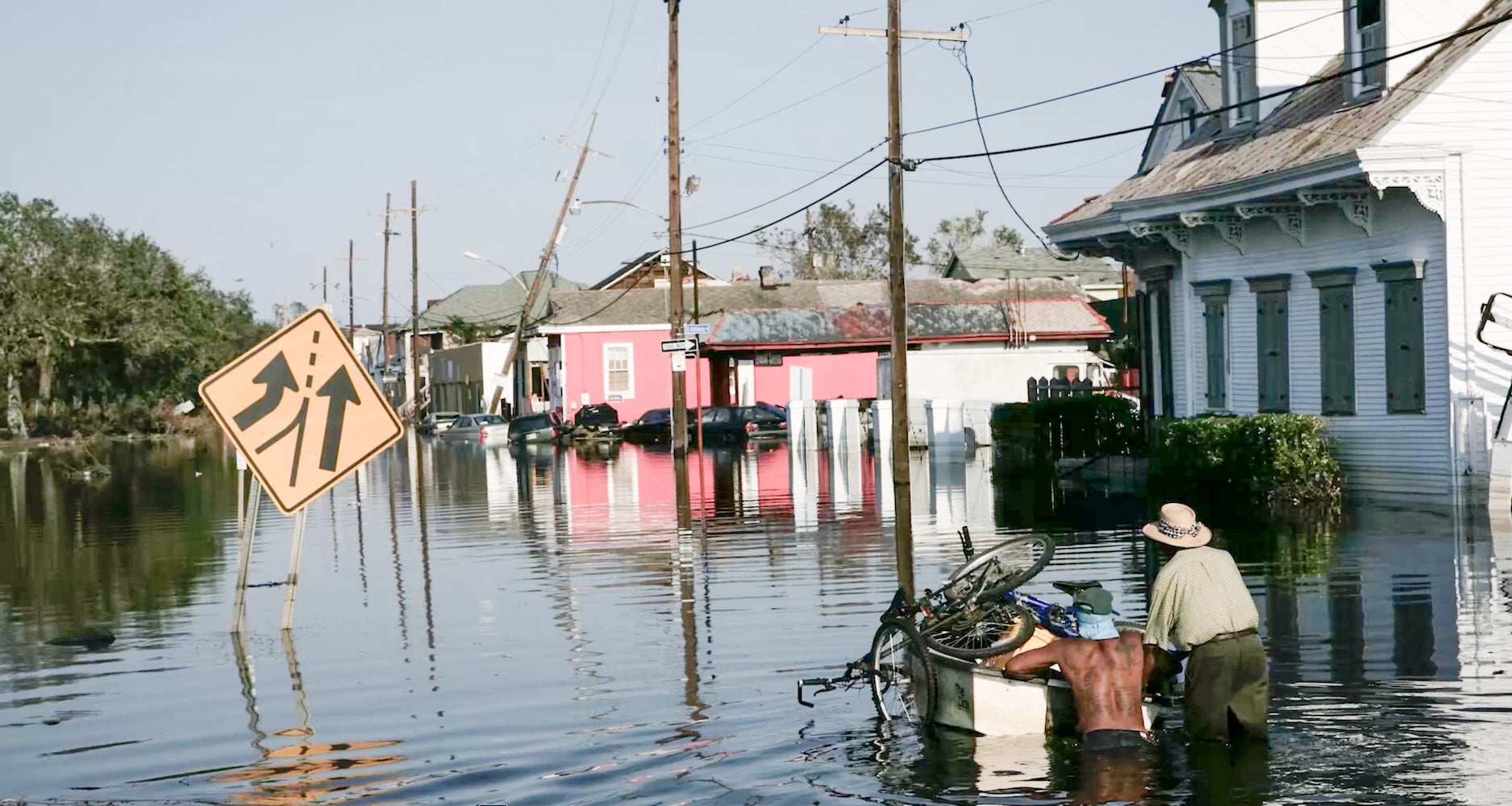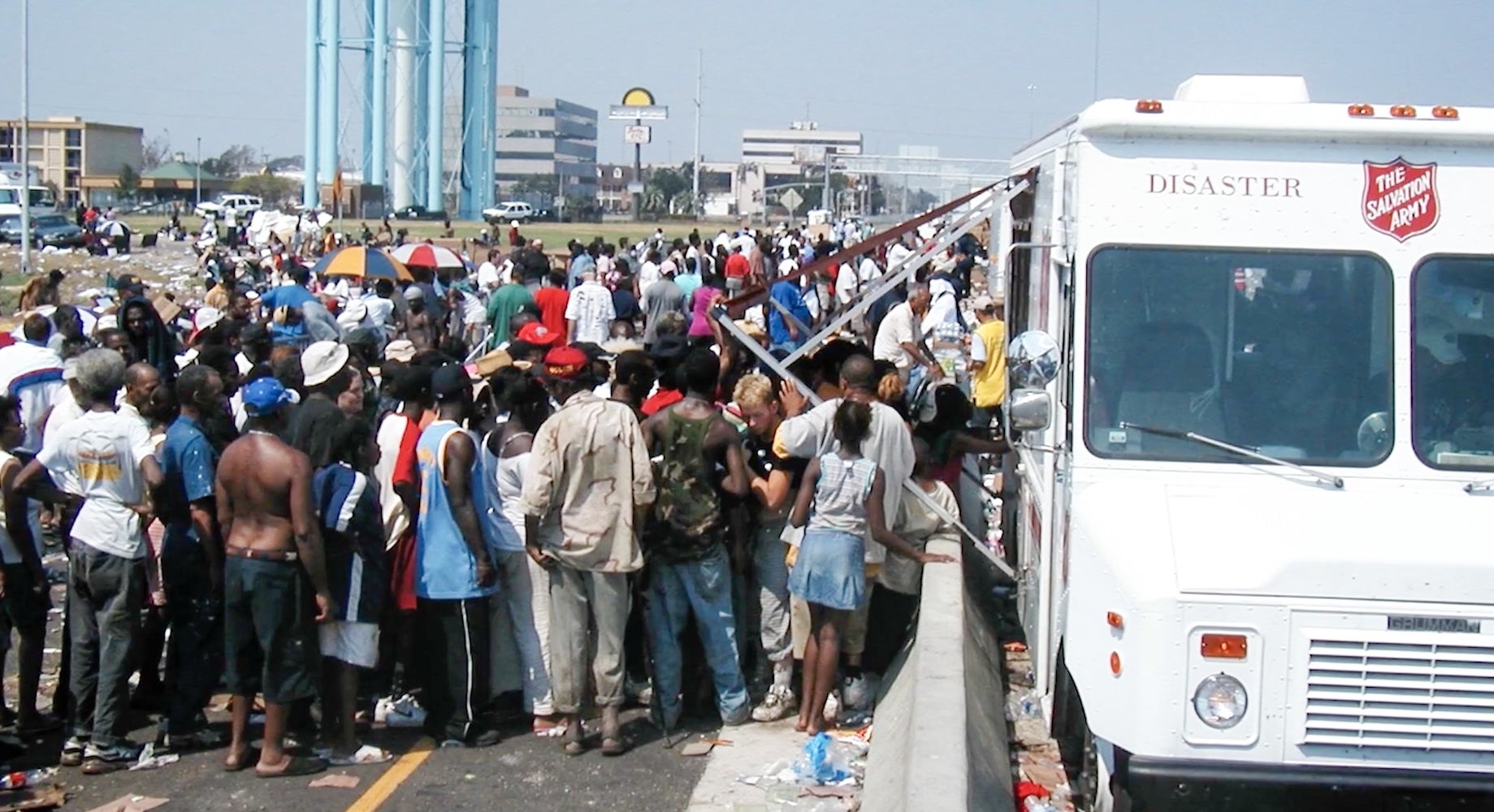20 Years Later, Remembering Katrina
By Michelle Hartfield /

Michelle Hartfield is the Southern Territorial public information officer for Emergency Disaster Services. She pulls upon her passion for others as well as her own lived experience when making genuine connections with those experiencing the worst day of their lives during disasters.
Sunday, August 28, 2005, began for me as many others had before. It was a summer day in south Mississippi, one smothered in the kind of heat and humidity you have to experience to understand. A recent college graduate, I was working and living roughly 40 minutes from the Mississippi Gulf Coast. That morning, I went to church and noticed a buzz far beyond the normal congregational chatter. In every corner of the room, people were discussing a storm in the gulf, wondering what they should do to prepare.
With the arrogance of youth and a belief that I was far enough inland to avoid real danger, I planned to ride it out. I had done so for many other hurricanes; why should I do anything differently? However, a heavy dose of persuasive concern from my parents ultimately led me to evacuate. I packed only enough clothes for a weekend, loaded my dog into my car, and drove to their house in Jackson. To appease my mother, I left in a hurry, dirty dishes still in the sink, confident I would be back to deal with them shortly.
What was usually a 90-minute drive instead took almost four hours. Normally fast-moving highways had turned into parking lots. Thousands of evacuating vehicles clogged roads that were never intended to hold so much traffic. Slowly, as I inched my way towards Jackson, I began to realize this storm was different.
The next day, we watched news coverage of Katrina making landfall until we lost power. We were in the dark opening windows to let in whatever breeze we could when the levees in New Orleans broke and the Mississippi coastline was washed away. Though we didn’t yet know it, everything had changed. The very name “Katrina” would forevermore be charged with a heaviness that spoke of destruction, yes, but also of redemption and rebuilding — but that was still to come.
In the days, weeks, and even months that followed Katrina’s landfall as a Category 3 hurricane, a new landscape was revealed. Entire communities had been wiped off the map. Homes were torn apart, livelihoods were lost, and lives were tragically cut short. It took two weeks for roads to be clear enough for me to get home. When I finally did, it was to discover a home no longer livable with several giant trees lodged inside my bedroom. Those dirty dishes? They were thrown away along with countless other ruined possessions.
Still, I was fortunate. I was young, single, and had somewhere I could go. I was healthy and safe. Many coastal residents found themselves facing a different reality, one full of uncertainty. Where would they eat? Live? Find water? Amid this turmoil, The Salvation Army responded quickly and set out to serve hurting people in their time of greatest need. While I was not at the time employed by The Salvation Army, I was very much aware of the services they were providing and how quickly they had arrived. I now know this is because they were already there, serving the communities day in and day out.
In fact, even before the storm struck, The Salvation Army had mobilized across the country to aid evacuees. Post landfall, The Salvation Army quickly began coordinating resources to three response teams serving in the hardest hit areas of Alabama, Louisiana, and Mississippi.
Ken Cavallero, who deployed from the Western Territory, recalled his first day on the Mississippi Gulf Coast, where the storm surge was at its worst. “I was standing on the coast, Highway 90 near what was Pass Christian, Mississippi, and looking at how everything that was… wasn’t anymore. Everything was gone. All that was left was sand and debris. I wondered what Noah must have thought after the flood and the world was wiped clean.”
Major Marshall Gesner, one of the officers who led this team, said, “One of the impressions that remains with me is the spirit of willingness to do ‘whatever it takes’ from those actually involved in the response and later recoveries, and particularly as it relates to The Salvation Army effort at all levels, from the crew chief on a canteen to the territorial commander. There always seemed to be an answer and response… even to major needs.”
In New Orleans, which remained flooded for weeks after the storm, The Salvation Army worked tirelessly, sending canteens with food, water, and emotional and spiritual care specialists to minister to those in need. “For the first several days, we couldn’t even pierce the lines of New Orleans because there was so much devastation on the way there,” said Captain John Falin, a corps officer in Texas who served during Katrina. “We would go a few miles, and there would be a lot of houses that were ruined. People didn’t have any food or water, so we would stop to take care of those people. Then, we would have to go back and restock. It took us days just to get into New Orleans itself.”
In the aftermath of Katrina, Salvation Army volunteers and disaster professionals worked tirelessly to provide food, shelter, and emotional support to those who had lost everything. Their dedication to serving impacted communities showcased the true essence of compassion and resilience. From distributing hot meals to offering a shoulder to lean on, The Salvation Army played a pivotal role in helping individuals rebuild their lives, officially transitioning to longterm recovery in January 2006.
As part of recovery efforts, volunteers, staff, and officers worked to restore basic social service programs to the Gulf Coast, reopening homeless shelters, community centers, a rehabilitation center, children’s programs, and church services. And, since responding to catastrophic disasters takes a significant toll on the responders themselves, The Salvation Army invested in local disaster and resiliency programming including training, equipment and infrastructure,
